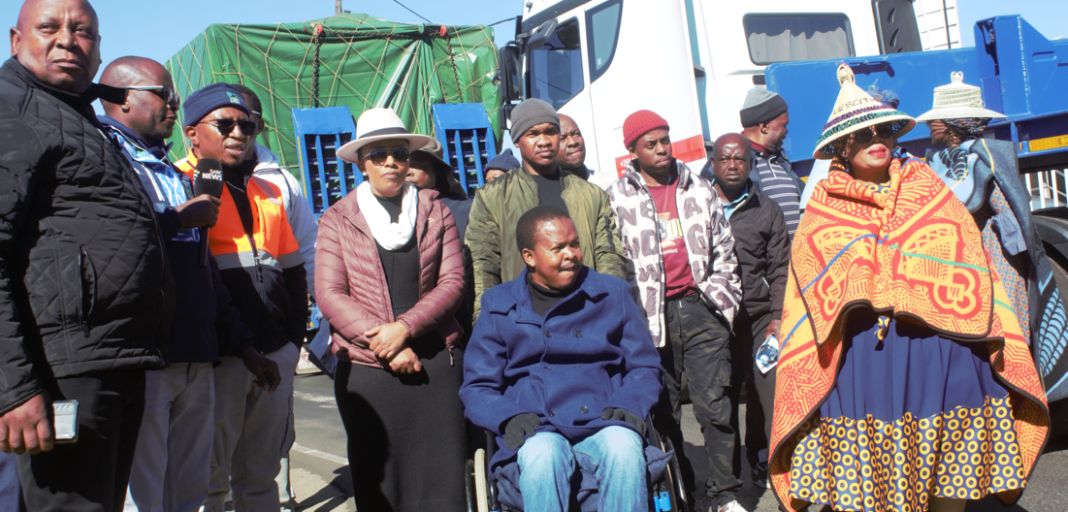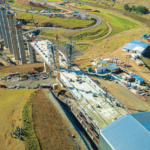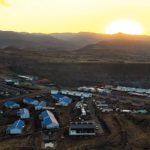Lesotho has marked another key milestone in regional infrastructure with the recent arrival of the second Tunnel Boring Machine (TBM) for use in the second phase of the Lesotho Highlands Water Project (LHWP II).
The TBM, described as a “marvel of modern engineering” by Lesotho Highlands Development Authority’s (LHDA) Reentseng Molapo, who spoke on behalf of the Chief Executive, will be used to excavate the 38-kilometre Polihali Transfer Tunnel.
This critical conduit will link the new Polihali Dam, currently under construction, to the existing Katse Dam, enabling the annual transfer of over 400 million cubic metres of water to South Africa’s Vaal River System.
“This TBM will be instrumental in ensuring we meet our ambitious targets. It brings with it not only engineering excellence but also real economic and social opportunities for our communities.” Molapo said.
The arrival of the TBM was hailed as a symbol of progress, regional cooperation, and economic promise. Minister of Social Development Pitso Lesaoana called the moment one of “national pride,” highlighting the broader benefits the project brings to local communities through infrastructure and job creation.
“This TBM represents more than technology, it is a promise of progress and development for our country,” Lesaoana declared.
Local leaders echoed similar sentiments. Chief Chona Nhlapho of Ha Belo village emphasised the economic potential the project unlocks for local businesses and services, particularly in construction.
From the South African side, High Commissioner Constance Seopasengwe praised the project as a cornerstone of regional development, both economically and diplomatically. Referring to Lesotho’s water as “white gold,” she reaffirmed South Africa’s strategic interest in the success of LHWP.
“This is the largest infrastructure investment by South Africa outside its borders. It is a shining example of public-private partnership,” she said, citing the role of the Trans-Caledon Tunnel Authority in mobilising capital from South African financial markets.
Beyond its technical and financial scope, the LHWP has placed a strong emphasis on environmental protection and community welfare. Thousands of jobs are being created, while upskilling of local workers in advanced construction technologies is underway. Authorities also noted that affected communities have been thoroughly consulted, with compensation and relocation plans being implemented.
“The peace is paramount,” Seopasengwe said. “Without it, development cannot be achieved. Water binds nations together. It is the source and sustainer of all life.”
The tunnel construction is set to commence shortly, with the LHDA expressing confidence in meeting, if not beating, set deadlines. The Minister of Natural Resources Mohlomi Moleko was praised for his active leadership throughout the process.
As construction begins, the TBM stands as more than just a machine, it is a symbol of unity and determination, underpinning a project that connects not just rivers and reservoirs, but people, economies, and futures across borders.
“Together, we have achieved a lot. We can still do more. Let us ensure that this project is completed successfully, for the prosperity of both Lesotho and South Africa,” Seopasengwe concluded.
Summary
- Lesotho has marked another key milestone in regional infrastructure with the recent arrival of the second Tunnel Boring Machine (TBM) for use in the second phase of the Lesotho Highlands Water Project (LHWP II).
- The TBM, described as a “marvel of modern engineering” by Lesotho Highlands Development Authority’s (LHDA) Reentseng Molapo, who spoke on behalf of the Chief Executive, will be used to excavate the 38-kilometre Polihali Transfer Tunnel.
- As construction begins, the TBM stands as more than just a machine, it is a symbol of unity and determination, underpinning a project that connects not just rivers and reservoirs, but people, economies, and futures across borders.

Seabata Mahao is a general news reporter with special focus on Business and Sports. Started working at Newsday in 2021. Working in a team with a shared goal is what I enjoy most and that gives me the motivation to work under any environment leading to growth.








